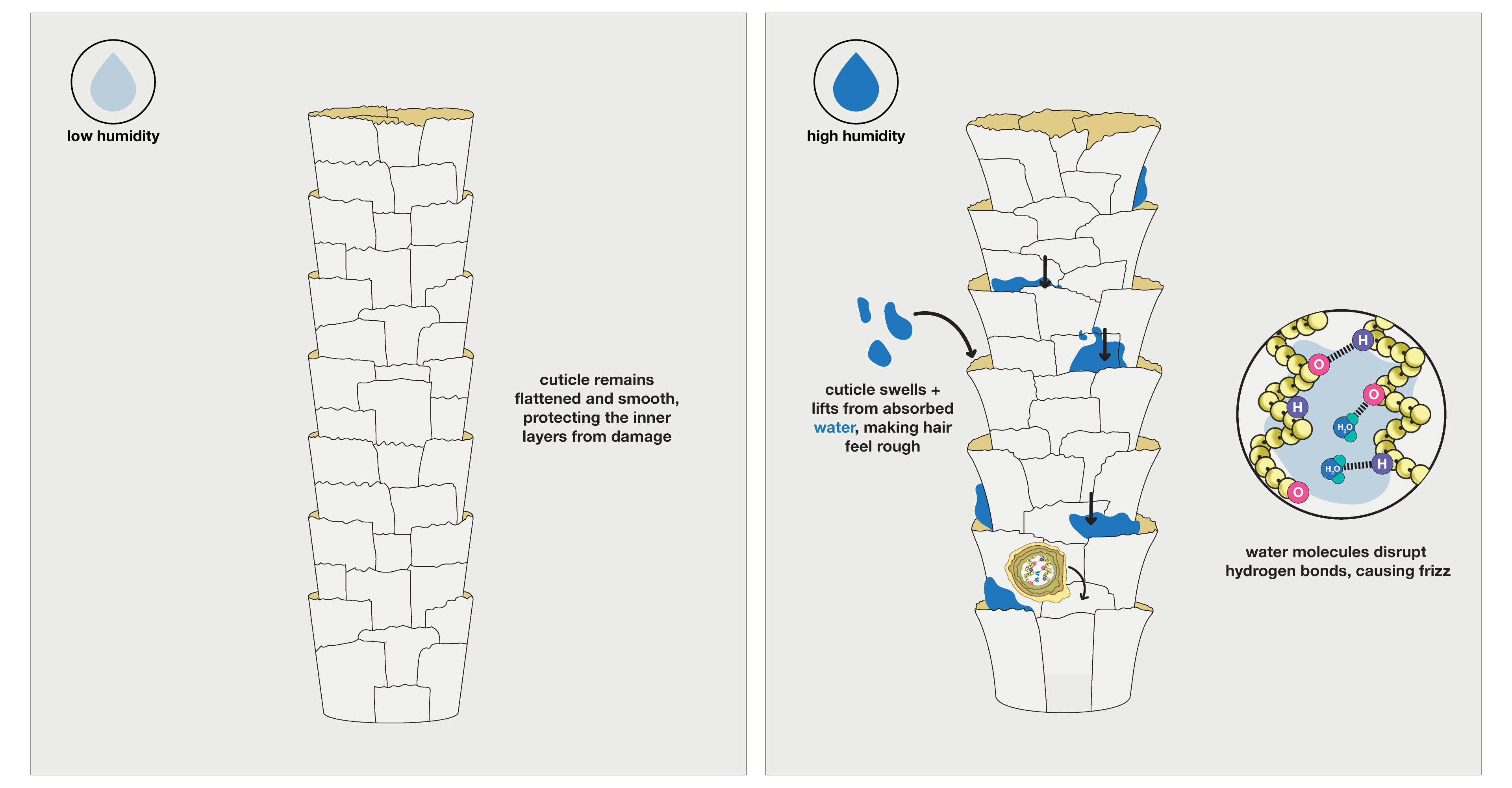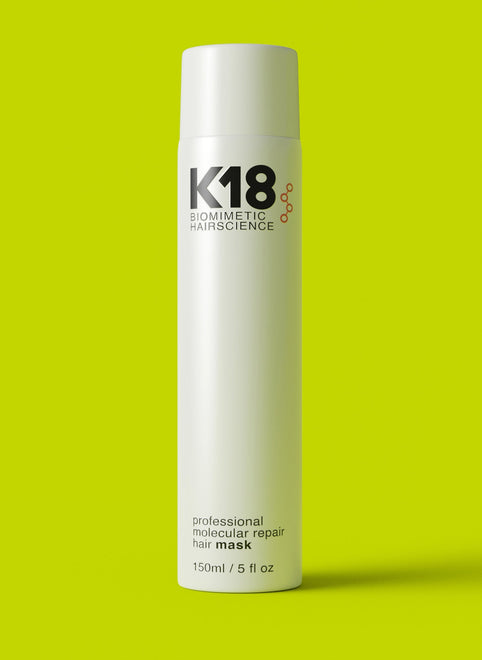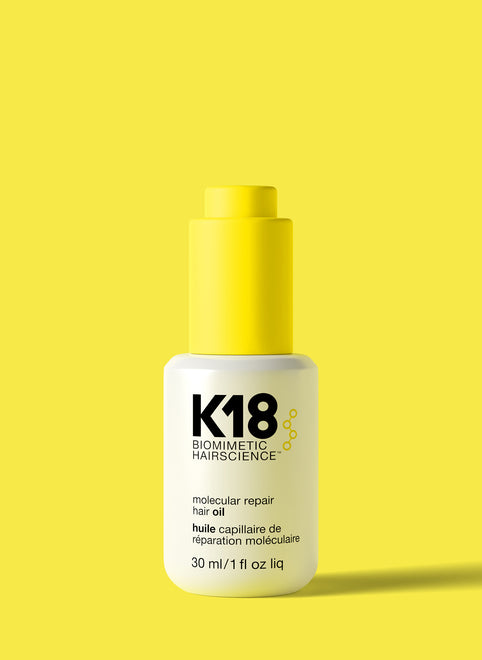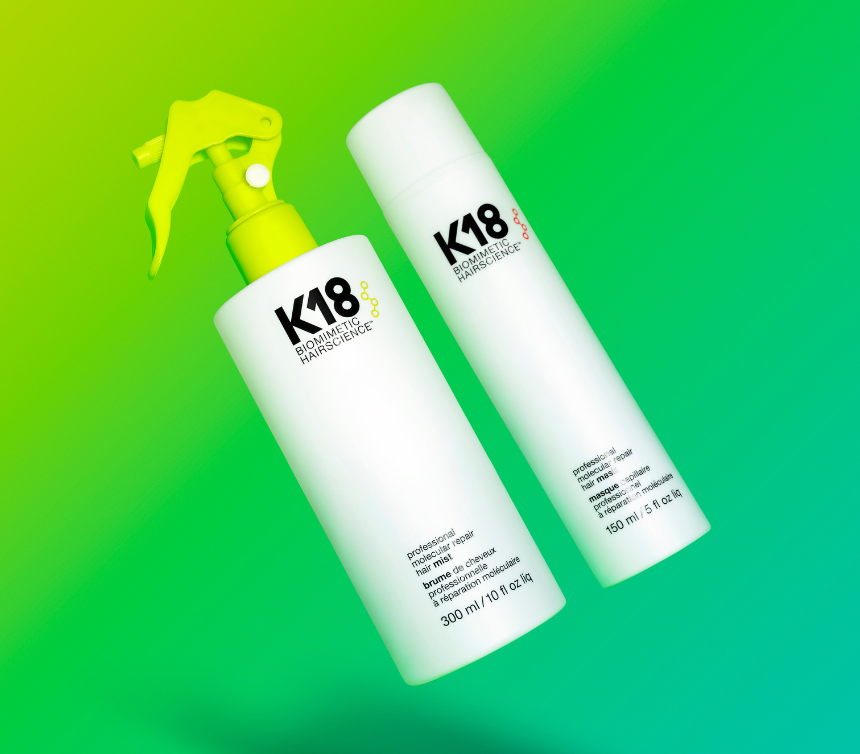Discover the root cause deep inside hair and the proven molecular repair solution.
Nothing can mess up a good hair day quite like frizz. After all, it’s the most searched hair term for a reason: it happens to everyone. This is why we’ve covered it so many times—including here, here, and here—and why we continue to do so.
“Anyone can suffer from frizz,” confirms Fraser Bell, Head of Advanced Research here at K18. “Though it can look different in different hair types—for instance, those with straight hair experience flyaways and a haze around the hair caused by fibers sticking out, while wavy and curly hair types experience loss of definition and unwanted fluffy volume.”
What is the root cause of frizz though? And can it actually be fixed or prevented, or are we destined to forever be treating it as needed on the surface?
Here’s what we know.
what causes frizz?
Frizz is famously tough to fix. This is because our hair is exposed to damaging elements on a daily basis. The most common factors that lead to frizzy hair include humidity, dryness, and damage.
“Moisture and humidity are the main causes of frizz, as they disrupt the style you’ve set by penetrating into the hair and breaking the hydrogen bonds that hold the hair’s shape,” explains Bell. “Damage from bleach, coloring, heat, etc. also makes frizz worse because damaged hair absorbs more water, more quickly, which means the hair can lose its style and become frizzy faster.”

Additionally, when hair is damaged and disulfide bonds and peptide chains are broken, the cuticle—the outermost layer of the hair—so it absorbs water, swells, and becomes rough. When rough cuticles rub against one another, you guessed it: frizz becomes even worse.
Dryness can also cause frizz because dry hair desperately craves moisture, and when it’s exposed to humidity, the cuticle opens up and grabs onto the excess moisture in the air, resulting in (you guessed it) more frizz. The reality is, we can trace frizz back to the same source—damage.
So what can you do about it?
fixing frizz from the inside out
While most products are designed to work on the surface level of the hair and don’t address the root cause of frizz (i.e. cuticle damage)—molecular repair is different.
How exactly? K18’s molecular repair hair mask and molecular repair hair oil both contain our patented K18PEPTIDE™, which works by penetrating the innermost layers of hair and repairing damage from the inside out in just 4 minutes*. It does so by reconnecting polypeptide chains and disulfide bonds that get broken due to the aforementioned damaging factors.

your frizz-fighting routine
Kick it off with our award-winning hair mask to reverse damage from bleach and color, chemical services, and heat*—then, for best results, follow with the award-winning molecular repair hair oil before styling. The weightless, biotech-engineered strengthens, repairs damage, and reduces frizz at two levels of the hair fiber.
In addition to K18PEPTIDE™, our hair oil also contains a powerhouse blend of avocado oil, sunflower oil, and both hemisqualane and squalane to smooth frizz on the surface of the hair. So while the peptide is working its magic deep within hair, these other ingredients are immediately smoothing hair on the outside. Plus, it offers heat protection up to 450° F* to help fend off further damage from styling.
See the difference molecular repair can make for smooth, healthy, frizz-free hair—now + over time.


.png?v=1706135824299&transform=resize=150x150)


.png?v=1695413339252&transform=resize=150x150)



